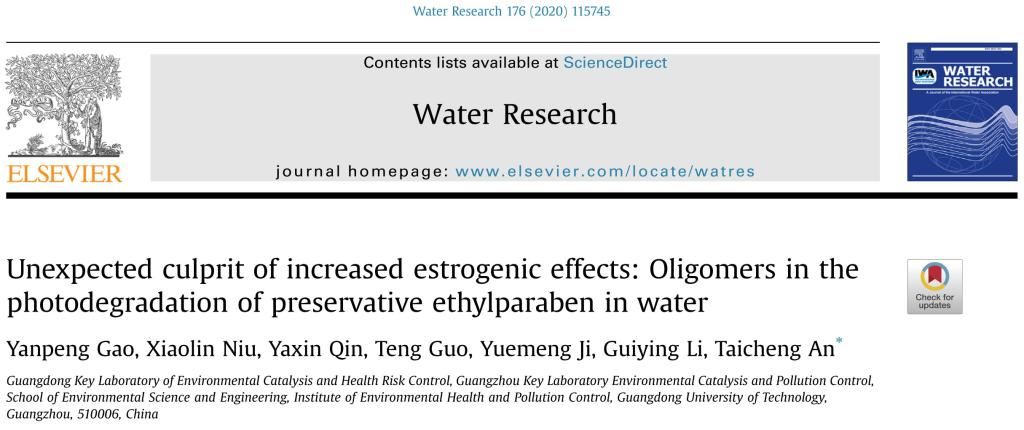Download Address: https://doi.org/10.1016/j.watres.2020.115745
Yanpeng Gao, Xiaolin Niu, Yaxin Qin, Teng Guo, Yuemeng Ji, Guiying Li, Taicheng An*. Unexpected culprit of increased estrogenic effects: Oligomers in the photodegradation of preservative ethylparaben in water. Water Res. 2020, 176:115745.

ABSTRACT:
Widespread occurrence of emerging organic contaminants (EOCs) in water have been explicitly ass
ociated with adverse effects on human health, therefore representing a major risk to public health. Especially the increased toxicity is frequently observed during the photodegradation of EOCs in natural water, and even wastewater treatment plants. However, the culprit of increased toxicity and formation mechanism has yet to be recognized regarding the estrogenic activity. In this study, by combining laboratory experiments with quantum chemical calculations, the induction of human estrogenic activity was investigated using the yeast two-hybrid reporter assay during the photodegradation of preservatives ethylparaben (EP), along with identification of toxic products and formation mechanisms. Results showed that the increase in estrogenic effect was induced by photochemically generated oligomers, rather than the expected OH-adduct. The maximum estrogenic activity corresponded to the major formation of oligomers, while OH-adducts were less than 12%. Two photochemically generated oligomers were found to contribute to estrogenic activity, produced from the cleavage of excited triplet state molecules and subsequent radical-radical reactions. Computational toxicology results showed that the increased estrogenic activity was attributed to oligomer [4-Hydroxy-isophthalic acid 1-ethyl ester 3-(4-hydroxy-phenyl)] and its EC50 was lower than that of the parent EP. In contrast, OH-adducts exhibited higher EC50 values than the parent EP, while still possessing estrogenic activity. Therefore, more attention should be paid to these photodegradation products of EOCs, including OH-adducts.

